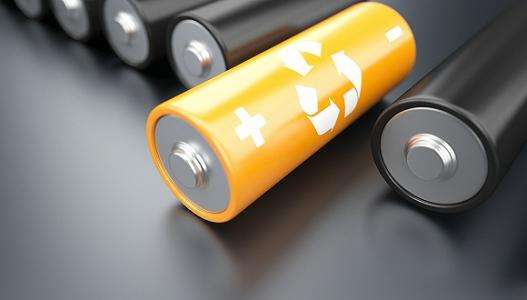How Long Do We Need To Change A Medical Lithium-Ion Battery?
Mar 12, 2020 Pageview:1151
Generally, a 20 % decrease in the time that the battery can be used, before it requires charging, it is seen as the point where the capacity decrease becomes an issue. The useful life of the rechargeable battery is defined as the number of charges and discharge cycles before the total capacity falls to 80 %.
In this article, you will know about lithium-ion batteries. There are certain parameters you should take care of before choosing the medical lithium-ion batteries. It also mentions the factors for the durability of the battery.
How do you assess lithium-ion battery life for implantable medical devices?
Lithium batteries come in all sizes. There are small batteries used in the medical field to power bio-engineering devices. These devices are within the body to monitor and maintain health.
Battery life is an essential factor in many applications. For implantable medical devices, patients need to have confidence that the battery will give them a long time for getting recharged, which is also known as the charging interval.
The battery's useful capacity, the time between charges, will gradually decrease over its usable life, and this gives a surety that how many years it will last before it needs replacing. It determines the longevity of the battery and how much use the charge/discharge cycles can be used for.
Longevity is the key to buying factors when choosing a battery. Once the battery has reached the end of its useful life, it needs replacing, which will involve a surgical procedure in an implantable device.
How lithium-ion battery lifetime can be affected?
In lithium-ion batteries, the potential difference between the negative and positive terminals increases as the battery is charged and energy is inserted into the battery. It then decreases as the battery is discharged in use, and energy is taken out.
It means that the voltage can be measured across the terminals indicates that the battery is fully charged and how much energy remains in it. In medical applications, a lithium-ion battery might be rated between average voltage that is 3.6V or 3.7 V.
The standard procedure is to charge the battery to a voltage about 4.1 V and to discharge at a low temperature of 2.7 V. The maximum voltage at which charging is stopped called the end of charge voltage level.
The low voltage point defines the Depth Of Discharge. Fully discharging a battery is considered to be 100 % Dod, whereas you could measure a small percentage of Dod. Another change can be impacted on a lifetime that is reducing the upper voltage endpoint from 4.1 V to a lower value.
The reason for these many changes is different chemical reactions which take place in lithium-ion cells. The examples are to degrade the electrolyte and to deposit insoluble compounds on the anode, and it decreases its efficiency.
The performance of the battery can be measured in the capacity. Internal resistance and self-discharge also play roles, but these are less important in predicting the battery life with the modern Li-On.
How do you buy a useful medical lithium-ion battery?
When buying battery-powered devices, several factors need to be considered. They include safety, battery life, safe and efficient charging, the correctness of the fuel gauge, the impact of high-temperature sterilization, and complying with regulations.
Safety - An essential concern, as anyone might expect, is security. If the battery is making a
contact with the patient, it can't present a shock hazard, issue unwanted heat, or make any chemical reaction with materials effectively present in the environment. Additionally, ports that may be accessed by medical staff or patients must be secured against shortcircuits, electrostatic discharge, and other electromagnetic interference.
Battery Life- Every time the battery is used, its rechargeable battery gets decreases slightly, depending on the depth of discharge. The fact is known that battery cycles cannot deliver 100 % capacity.
Balanced Charging- By and large, Li-particle batteries are charged utilizing a regulated voltage with the constrained current. During the early bit of the charge cycle, a current is consistent, and voltage rise to its standardized value. After arriving, the current step by step diminishes as the battery comes at the full limit. Charging regularly ends when the current falls underneath a predetermined level.
Accuracy of the fuel gauge - It is significant that all cells in a multicell pack stay balanced with respect to capacity and state-of-charge. That is because the charge is constrained by the cell most full, while discharge is restricted by the cell least full. One cell's state-of-chargee restrains the exhibition of the whole battery pack.
Sterilization - The present improved fuel gauges can measure the state of the strength of the cells in the pack to decide when is the correct time to replace pack on an individual basis. Furthermore, new functions can impair the battery when it is no longer reliable. The number of reviving cycles can be synchronized with the battery pack's warranty; with that function, users will know when the pack should get replaced.
Alternative sterilization methods are prompted for Li-particle battery packs. They incorporate chemical cleaning at lower temperatures or peroxide-gas systems in a vacuum at room temperature. These lower temperature chemical treatment options require an appropriate selection of perfect battery materials that don't degrade when exposed to different environments.
Conclusion-
Even small differences in operating conditions such as charge and discharge voltages can affect the battery lifetime or useful life. The buyers should ensure that they are comparing the batteries in a like-for-like way and should also check the testing conditions specified by battery manufacturers.
- Prev Article: How to Make Batteries in Medical Devices More Reliable
- Next Article: Will a NiCad charger charge a lithium ion battery?
Leave Message
Hottest Categories
-
Hottest Industry News
-
Latest Industry News














